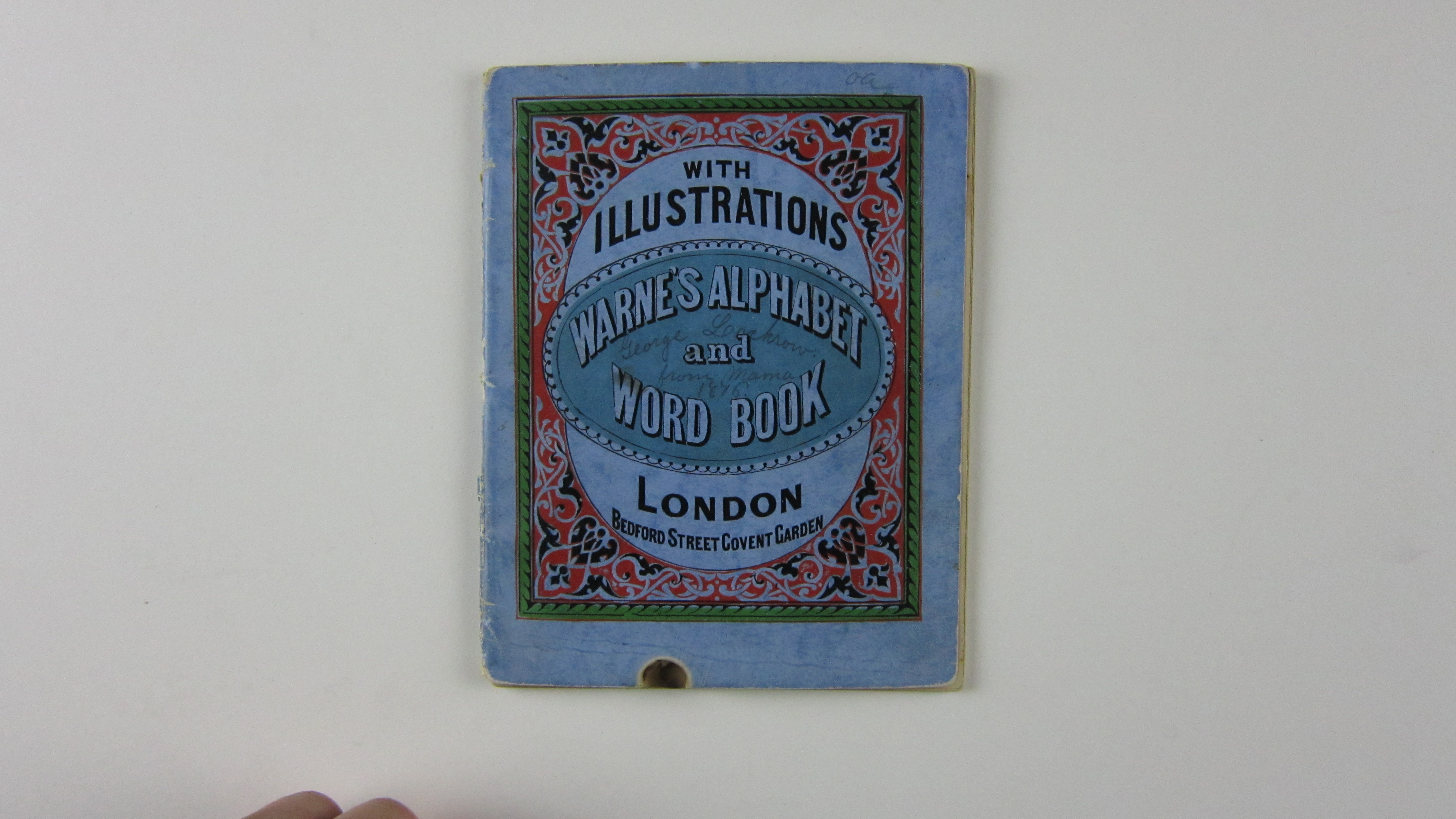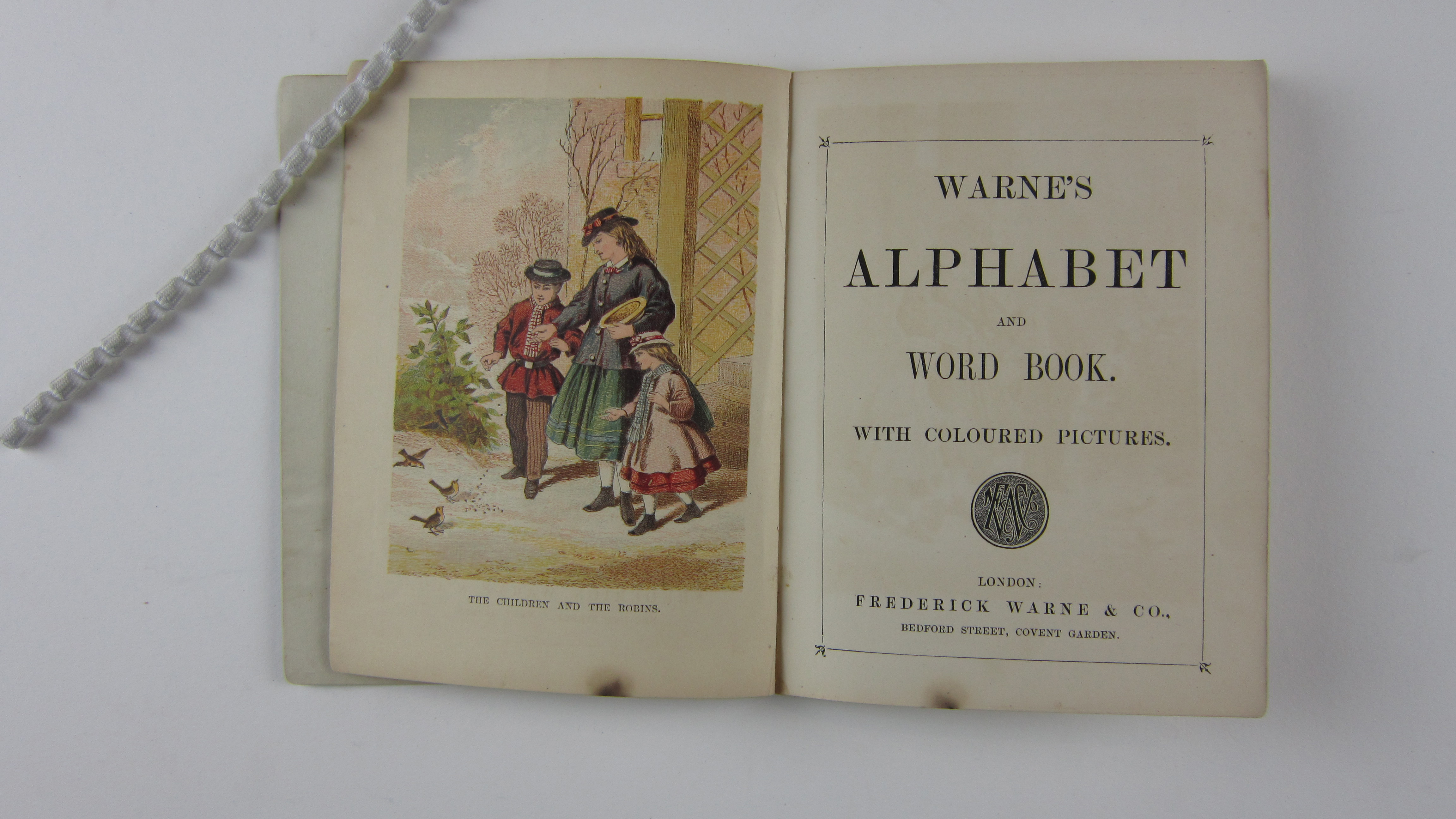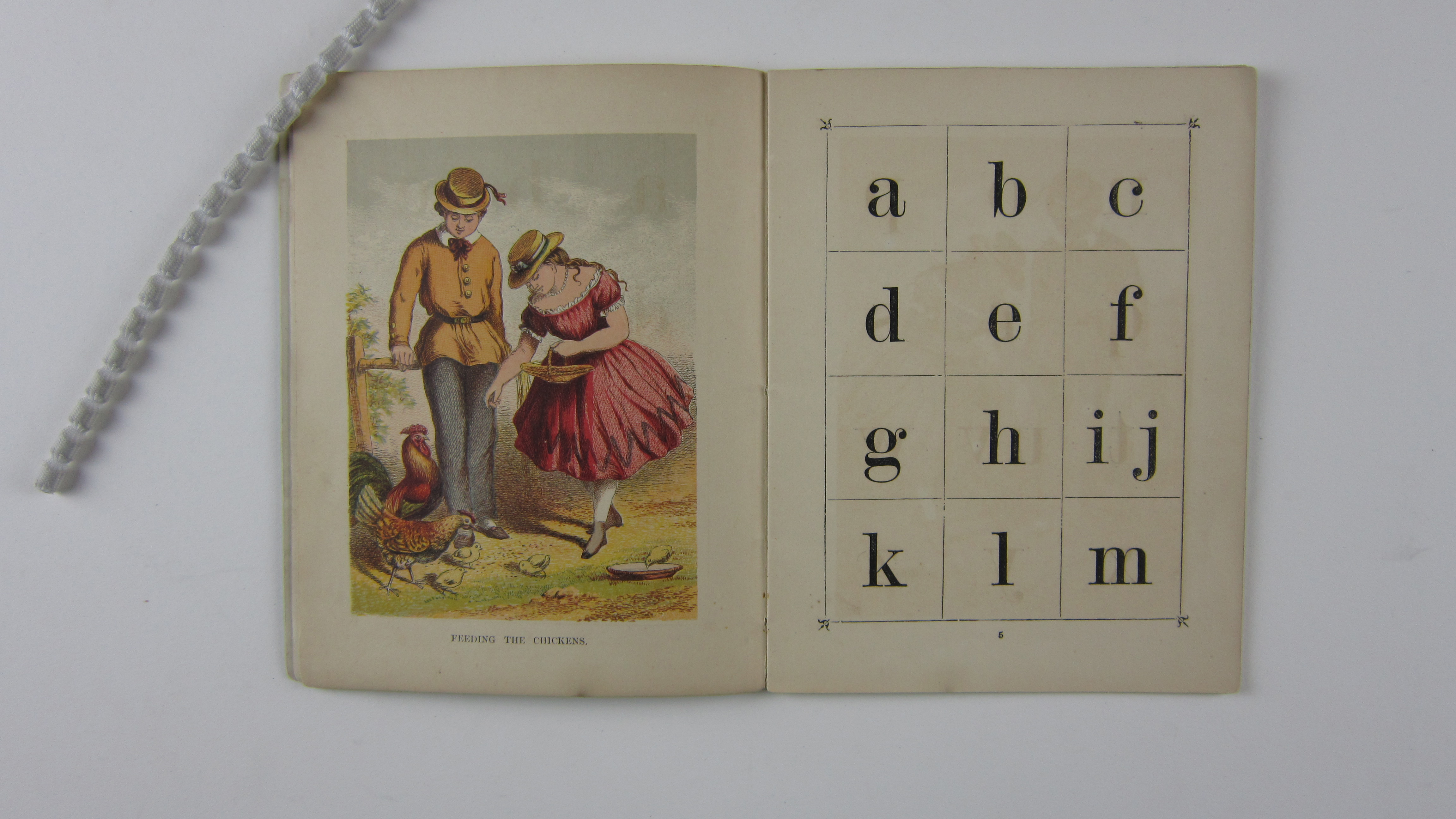

Alphabet books offer a vivid insight into the history of literacy and culture, as well as concepts of childhood. The Children's Book Collection at UCLA contains a rich array of these materials, some well-worn and much-used, some still bright and fresh. Each is a gem of print production and graphical imagery from another time and place. Though the history of alphabet books continues to the present, this exhibit focuses on the works in our collections published between 1700 and 1900, including horn books, primers, works of didacticism and seriousness, whimsy and play.
2. A Jumble ABC
3. A Little Pretty Pocket-Book
4. A New Lottery Book of Birds And Beasts
5. A Pretty Play-Thing for Children of All Denominations
8. ABC of Objects for Home And School
10. ABC with Pictures & Verses
12. Alphabet Et Instruction Pour Les Enfans
16. Dolly's ABC Book
17. Flora's ABC
18. Home ABC
22. Hornbook C. 1700
23. Large Letters for the Little Ones
24. Little ABC Book
25. Little People: An Alphabet
26. Martin's Nursery Battledoor
27. Mother Goose ABC
28. My Darling's ABC
29. Orbis Sensualium Pictus Quadrilinguis
30. People of All Nations: A Useful Toy for Girl Or Boy
31. Picture Alphabet
32. Pretty ABC
33. Railway ABC
34. Rusher's Reading Made Most Easy
38. The Alphabet of Old Friends
40. The Amusing Alphabet for Young Children Beginning To Read
42. The Child's Christian Education
45. The Easter Gift
47. The Favorite Alphabet for the Nursery
49. The Franklin Alphabet And Primer
51. The Golden ABC
55. The Moral And Entertaining Alphabet
57. The Old Testament Alphabet
59. The Picture Alphabet for Little Children
62. The Sunday ABC
63. The Union ABC
64. The Young Child's ABC, Or, First Book
65. Tom Thumb's Alphabet: Picture Baby-Books
67. Warne's Alphabet And Word Book: with Coloured Pictures
68. Wood's Royal Nursery Alphabet
Title Warne's Alphabet And Word Book: with Coloured Pictures



Brief description Beautiful pictures. Publisher's printed blue stiff wrappers, blocked in red and green; publisher's advertisement. Burn hole at foot of upper wrapper; scorch marks through to p. 5.
Full description This primer is particularly beautiful, with a blue front cover, a green border, and red and black design surrounding title. The back is also in blue, with an advertisement for more children books by the same publisher of this book. The inside pages of the book feature color illustrations of children in nature interspersed with lessons to teach children to read. Printed at the end of the Romantic era, the book's illustrations portray that era's influence. There is an inscription on the cover in pencil, which reads, "George Lockrow from Mama, 1876." Depictions of boys and girls in the color illustrations indicate that this primer was meant for both genders, and may have been used by George and all his siblings.
Literacy Literacy was on the rise in the late nineteenth century, as education became more important for the functioning of society. There were more public schools for children, even girls and women were encouraged to learn to read. This educational push was not directed only at children. More people, of all ages were becoming literate, regardless of wealth or class. The children using this book learned more than simply the alphabet, words and numbers. The children were learning cultural literacy and the expectations of their upper class status and place within society. Idyllic pictures depict children dressed in clothing suggesting wealth and the upper class caring for animals.
Childhood The contemporary notion of childhood is represented through the book's beautiful illustrations and the overall presentation. The illustrations show children feeding and tending to animals. The children look serene, neither overly joyous nor gloomy, and are presented as well-dressed and well-behaved. The children depicted in these illustration show a childhood of composure and learning unburdened by adulthood pressures of work and arduous labor. For example, in the illustration entitled, "The Little Shepherdess," the young girl is shown in a beautiful white dress, not in a frock or play clothes, which were standard playtime wear for children in lower classes.*The book's presentation is structured to gradually teach children starting with the alphabet and building to lessons of words of two and three letters. The alphabet is first displayed in a grid as capital letters, taking up two pages, and continuing on the succeeding pages in the same fashion with lower-case letters. The latter portion of the book increases in difficulty by adding Arabic and Roman numerals as well as words of two and three letters. The layout suggests that the children reading this book were teachable and had the ability to grasp each lesson in order to move onto the next. The illustrations depict both genders. By the late nineteenth century it was common for girls, as well as boys, to be educated in reading and writing.
Iconography Warne's book includes illustrations in which the children depicted are always well-dressed and caring for animals in some way. For example, the first illustration is titled, "The children and the robins, depicting an idyllic scene with two children and a mother, or nanny feeding breadcrumbs to the robins." The children are serious and very neat, and not depicted as messy, or rambunctious. The clothing the children wear is impeccable, and all three are intent in their activity. The vocabulary presented in Warne's Alphabet and Word Book is straightforward and meant for the child to learn the ABCs and learn how to construct words. Towards the end of the book there are small sentences intended for children to practice reading. The sentences are similar to those used in current children's books, yet we are reminded that this book was not written for the children of today when we find sentences such as, "Run off, or I will go for the rod."
Production In the book, Children's Literature An Illustrated History, Peter Hunt says, "during the second half of the nineteenth century publishers competed to produce cheaper reading for an expanding market, and to improve the quality of popular reading material [for children]." The expanding market was for children's literature as more emphasis was placed on the publication of materials specifically for them. Fiction and fantasy books were gaining momentum and were geared toward children rather than only for adults. New notions and genres were written for the child. An example of concepts for children, as depicted in the illustrations of this book, is the portrayal of children being kind to animals. Animal cruelty was a new concept in the late nineteenth century, most notably depicted in Anna Sewell's Black Beauty printed, a year after this book, in 1877.*The publisher of this book, Frederick Warne & Co, was well known throughout the city of London for publishing illustrated children's books. The back cover has an advertisement for more books by the same publisher. This advertisement shows that this publisher was in the business of publishing many different types of children's books, and not simply the one depicted here on the screen. Some of the best known published were the works of Beatrix Potter. Frederick Warne & Co. published children's books for over a century and then in 1983, the well-known Penguin Books acquired Frederick Warne & Co.
Warne's Alphabet and Word Book is particularly beautiful, with a solid blue front cover decorated with a green border, and a red and black design surrounding the title. The back is also in solid blue, with an advertisement for more children books by the same publisher of this book. The inside pages of the book feature the alphabet and lessons. Interspersed between the alphabet & lessons are color illustrations. These color illustrations, a total of four throughout the book, are of children in nature. Printed at the end of the Romantic era, the book's illustrations portray that era's influence. One of the key ideas in romanticism was the awe of nature, so it is fitting that this book depicts children interacting with animals.*This primer was printed using letterpress and the beautiful color illustrations were made using chromolithography. Chromolithography was developed in the early nineteenth century and allowed for printers to create multi-color illustrations with more ease than they were previously able to do. The technique involved a polished limestone, to which wax crayons were applied. For beautiful chromolithography such as these, it was still most likely very expensive to make and to purchase. Chromolithography paved the way for books to contain illustrations with a multitude of colors as seen in the illustrations from this book.
Publisher Frederick Warne & Co.
Publication place 278 Strand, Covent Garden
Date 1876
UCLA Call Number CBC PE1119 .W37 1876
Repository UCLA Charles E. Young Research Library, Dept. of Special Collections
Dimensions 18 cm, height
Technologies of production Chromoxylography
Additional Information Inscription in pencil on upper wrapper: George Lockrow from Mama, 1876.